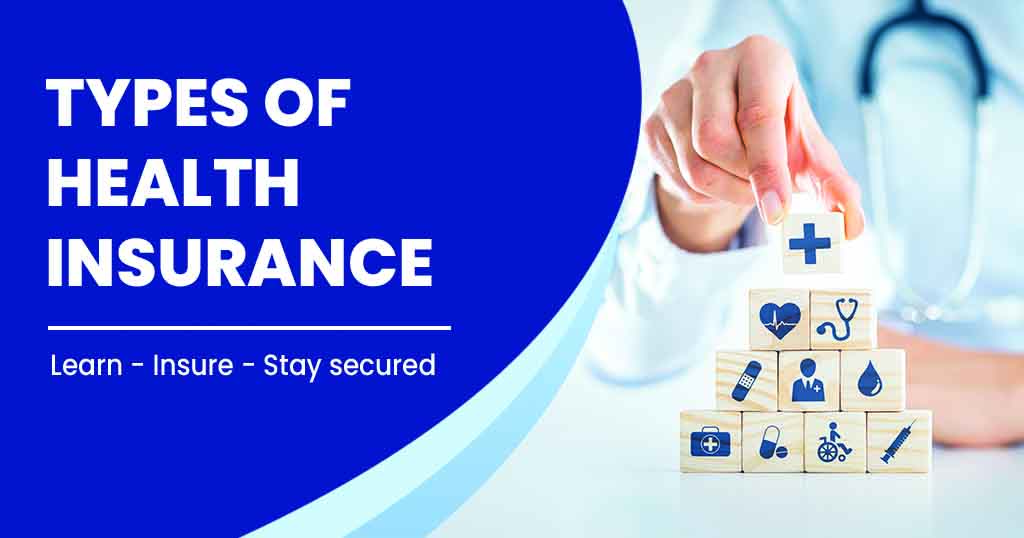Title
: “The Role of Health Insurance in Preventive Care and Disease Management”
Abstract: Health insurance plays a crucial role in promoting preventive care and managing chronic diseases, contributing to improved health outcomes and reduced healthcare costs. This paper examines the significance of health insurance in supporting preventive care initiatives, facilitating early disease detection, and enabling effective disease management strategies.
-
Introduction
- Overview of the importance of preventive care and disease management in improving population health and reducing healthcare expenditures.
- Introduction to the role of health insurance in supporting these efforts and promoting wellness.
-
Preventive Care Coverage
- Explanation of preventive care services covered by health insurance plans, including screenings, vaccinations, wellness visits, and preventive medications.
- Discussion on the value of preventive care in reducing the burden of chronic diseases and preventing costly medical interventions.
-
Promoting Access to Preventive Services
- Examination of barriers to accessing preventive care, such as cost, lack of awareness, and healthcare disparities.
- Analysis of how health insurance coverage expands access to preventive services for diverse populations, including low-income individuals, minorities, and underserved communities.
-
Incentivizing Wellness and Healthy Behaviors
- Exploration of wellness programs and incentives offered by health insurance plans to encourage healthy behaviors and lifestyle modifications.
- Evaluation of the effectiveness of incentives, such as premium discounts, gym memberships, and rewards for participation in wellness activities.
-
Early Disease Detection and Screening
- Importance of early disease detection in preventing disease progression and improving treatment outcomes.
- Role of health insurance in covering diagnostic tests, screenings, and preventive screenings for conditions such as cancer, diabetes, and heart disease.
-
Chronic Disease Management Programs
- Overview of chronic disease management programs offered by health insurance plans to support individuals with chronic conditions.
- Discussion on the components of disease management programs, including care coordination, patient education, medication management, and lifestyle interventions.
-
Telehealth and Remote Monitoring
- Examination of the role of telehealth and remote monitoring technologies in delivering preventive care and disease management services.
- Analysis of how health insurance coverage for telehealth services expands access to care, particularly for individuals in rural or underserved areas.
-
Cost-Effectiveness and Health Outcomes
- Evaluation of the cost-effectiveness of preventive care interventions and disease management programs in reducing healthcare expenditures and improving health outcomes.
- Discussion on the long-term benefits of investing in preventive care and disease management from both a healthcare and economic perspective.
-
Challenges and Opportunities
- Identification of challenges, such as healthcare disparities, provider shortages, and reimbursement issues, in promoting preventive care and disease management.
- Exploration of opportunities for collaboration among stakeholders, including insurers, healthcare providers, policymakers, and community organizations, to address these challenges and enhance preventive care efforts.
-
Conclusion
- Summary of the critical role of health insurance in supporting preventive care initiatives and disease management strategies.
- Call to action for policymakers, insurers,
-
Why is prevention more important than treatment?
- Prevention is often considered more important than treatment for several reasons:
-
Cost-Effectiveness
- : Prevention is generally more cost-effective than treatment. Investing in preventive measures, such as vaccinations, screenings, and lifestyle interventions, can help identify health risks early, prevent diseases from developing or progressing, and reduce the need for costly medical treatments and interventions in the future.
-
Improved Health Outcomes
- : Preventive care focuses on maintaining and promoting overall health and well-being, rather than just treating illness or disease after it occurs. By addressing risk factors, adopting healthy behaviors, and detecting health problems early, preventive care can lead to better health outcomes, higher quality of life, and reduced morbidity and mortality rates.
-
Reduced Burden on Healthcare Systems
- : Preventive care helps alleviate the burden on healthcare systems by reducing the demand for acute care services, hospitalizations, and emergency room visits. By preventing diseases and complications before they occur, preventive measures can free up resources, reduce wait times, and improve access to care for individuals who need it most.
-
Focus on Population Health
- : Prevention emphasizes population-level health promotion and disease prevention efforts, rather than just treating individual patients. By targeting risk factors and promoting healthy behaviors across communities, preventive care can address underlying determinants of health and reduce health disparities, leading to healthier communities and societies overall.
-
Empowerment and Self-Management
- : Prevention empowers individuals to take control of their own health and well-being by adopting healthy lifestyles, making informed choices, and engaging in proactive health behaviors. By promoting self-management and health literacy, preventive care encourages individuals to become active participants in their own healthcare and advocates for their own well-being.
-
Long-Term Sustainability
- : Prevention is essential for building a sustainable healthcare system that can meet the needs of present and future generations. By investing in prevention and health promotion initiatives, policymakers can create a healthier population, reduce the burden of chronic diseases, and promote long-term sustainability of healthcare systems and resources.
Overall, prevention is more important than treatment because it offers a proactive approach to health and well-being, promotes cost-effective interventions, improves health outcomes, reduces the burden on healthcare systems, addresses population health needs, empowers individuals, and promotes long-term sustainability of healthcare systems. By prioritizing prevention, we can build healthier communities, reduce healthcare costs, and improve overall quality of life for individuals and populations alike.
-
-
What is the definition of prevention in health?
- In the context of health, prevention refers to the actions and strategies taken to prevent or reduce the occurrence of disease, injury, disability, and other adverse health outcomes. Prevention encompasses a range of interventions aimed at addressing risk factors, promoting healthy behaviors, and protecting individuals and populations from potential health threats. The goal of prevention is to promote health, enhance well-being, and minimize the burden of illness and disease by addressing underlying determinants of health and implementing evidence-based interventions at the individual, community, and population levels. Prevention efforts can include primary prevention (preventing the onset of disease), secondary prevention (early detection and treatment of disease), and tertiary prevention (reducing the impact of existing disease and preventing complications).
-
Which is more important disease prevention or disease treatment?
- Both disease prevention and disease treatment are important components of healthcare, and their relative importance depends on various factors, including the type of disease, its severity, and the stage of its progression. However, in general, disease prevention is often considered to be more important than disease treatment for several reasons:
-
Cost-Effectiveness
- : Prevention is typically more cost-effective than treatment. Investing in preventive measures, such as vaccinations, screenings, and lifestyle interventions, can help identify health risks early, prevent diseases from developing or progressing, and reduce the need for costly medical treatments and interventions in the future.
-
Improved Health Outcomes
- : Prevention focuses on maintaining and promoting overall health and well-being, rather than just treating illness or disease after it occurs. By addressing risk factors, adopting healthy behaviors, and detecting health problems early, preventive care can lead to better health outcomes, higher quality of life, and reduced morbidity and mortality rates.
-
Reduced Burden on Healthcare Systems
- : Prevention helps alleviate the burden on healthcare systems by reducing the demand for acute care services, hospitalizations, and emergency room visits. By preventing diseases and complications before they occur, preventive measures can free up resources, reduce wait times, and improve access to care for individuals who need it most.
-
Focus on Population Health
- : Prevention emphasizes population-level health promotion and disease prevention efforts, rather than just treating individual patients. By targeting risk factors and promoting healthy behaviors across communities, preventive care can address underlying determinants of health and reduce health disparities, leading to healthier communities and societies overall.
-
Empowerment and Self-Management
- : Prevention empowers individuals to take control of their own health and well-being by adopting healthy lifestyles, making informed choices, and engaging in proactive health behaviors. By promoting self-management and health literacy, preventive care encourages individuals to become active participants in their own healthcare and advocates for their own well-being.
While disease treatment remains essential for managing existing health conditions and improving outcomes for individuals already affected by disease, prioritizing disease prevention can help reduce the overall burden of illness, promote population health, and create a more sustainable healthcare system in the long term. Therefore, while both prevention and treatment are important, prevention is often considered to be more advantageous from a public health and healthcare perspective.
-
-
What is the most important key to disease prevention?
The most important key to disease prevention is promoting healthy behaviors and lifestyles. Healthy behaviors can significantly reduce the risk of developing many chronic diseases and conditions, such as heart disease, diabetes, obesity, and certain types of cancer. Some of the most important healthy behaviors for disease prevention include:
-
Regular Physical Activity
- : Engaging in regular physical activity is essential for maintaining overall health and reducing the risk of chronic diseases. Physical activity helps control weight, lower blood pressure, improve cholesterol levels, and reduce the risk of heart disease, stroke, type 2 diabetes, and certain types of cancer.
-
Balanced Diet
- : Following a balanced diet that is rich in fruits, vegetables, whole grains, lean proteins, and healthy fats can help prevent a wide range of diseases. A healthy diet provides essential nutrients, vitamins, and minerals that support overall health and reduce the risk of obesity, heart disease, diabetes, and other chronic conditions.
-
Maintaining a Healthy Weight
- : Maintaining a healthy weight is important for reducing the risk of obesity-related diseases, such as type 2 diabetes, heart disease, stroke, and certain types of cancer. Achieving and maintaining a healthy weight through a combination of healthy eating and regular physical activity is key to disease prevention.
-
Avoiding Tobacco Use
- : Tobacco use is a leading cause of preventable diseases, including heart disease, lung disease, stroke, and various types of cancer. Avoiding tobacco use, including smoking and vaping, is crucial for preventing these diseases and promoting overall health.
-
Limiting Alcohol Consumption
- : Excessive alcohol consumption is associated with an increased risk of liver disease, heart disease, certain cancers, and other health problems. Limiting alcohol intake to moderate levels (up to one drink per day for women and up to two drinks per day for men) can help reduce the risk of these diseases.
-
Getting Regular Check-Ups and Screenings
- : Regular check-ups and screenings can help detect health problems early when they are easier to treat. Screenings for conditions such as high blood pressure, high cholesterol, diabetes, and certain types of cancer can identify risk factors and allow for early intervention and prevention.
-
Practicing Good Hygiene
- : Practicing good hygiene, such as washing hands regularly, covering coughs and sneezes, and avoiding close contact with sick individuals, can help prevent the spread of infectious diseases, including colds, flu, and COVID-19.
-
Managing Stress
- : Chronic stress can have a negative impact on health and increase the risk of developing certain diseases, such as heart disease, depression, and anxiety. Managing stress through relaxation techniques, exercise, mindfulness, and social support can help promote overall health and well-being.
Promoting these healthy behaviors and lifestyles through education, public health initiatives, and healthcare interventions is crucial for disease prevention and improving population health outcomes.
What are the 4 types of disease prevention?
Disease prevention can be categorized into four main types, each focusing on different stages of disease development and intervention strategies:
-
Primary Prevention
- : Primary prevention aims to prevent the occurrence of disease or injury before it occurs. This type of prevention focuses on addressing risk factors and promoting protective factors to reduce the likelihood of disease onset. Primary prevention strategies include health education, vaccination, promotion of healthy behaviors, environmental modifications, and legislative measures to reduce exposure to hazards. Examples of primary prevention interventions include childhood immunizations to prevent infectious diseases, smoking cessation programs to reduce the risk of lung cancer and heart disease, and promoting healthy eating and physical activity to prevent obesity and chronic diseases.
-
Secondary Prevention
- : Secondary prevention aims to detect and treat disease in its early stages, before symptoms become severe or complications develop. This type of prevention focuses on screening, early diagnosis, and prompt treatment to prevent the progression of disease and reduce morbidity and mortality. Secondary prevention strategies include routine screenings, diagnostic tests, and surveillance programs to detect diseases such as cancer, diabetes, and hypertension at an early stage. Examples of secondary prevention interventions include mammography for breast cancer screening, colonoscopy for colorectal cancer screening, and blood pressure screening for hypertension detection.
-
Tertiary Prevention
- : Tertiary prevention aims to reduce the impact of established disease and prevent complications, disabilities, and relapses. This type of prevention focuses on providing medical care, rehabilitation, and supportive services to individuals with chronic conditions to improve their quality of life and prevent further deterioration of health. Tertiary prevention strategies include disease management programs, medication management, rehabilitation services, and patient education to help individuals manage their health conditions and prevent complications. Examples of tertiary prevention interventions include cardiac rehabilitation for individuals with heart disease, diabetes self-management education for individuals with diabetes, and pulmonary rehabilitation for individuals with chronic obstructive pulmonary disease (COPD).
-
Quaternary Prevention
- : Quaternary prevention aims to mitigate the harms and costs of unnecessary or excessive medical interventions and overmedicalization. This type of prevention focuses on protecting patients from unnecessary medical interventions, preventing iatrogenic harm, and promoting ethical and evidence-based healthcare practices. Quaternary prevention strategies include promoting shared decision-making between patients and healthcare providers, reducing overdiagnosis and overtreatment, and advocating for patient-centered care and informed consent. Examples of quaternary prevention interventions include Choosing Wisely campaigns to promote evidence-based medical practices, patient decision aids to support informed decision-making, and initiatives to reduce unnecessary medical tests and procedures.
Overall, these four types of disease prevention work together to promote health, prevent disease, and improve outcomes for individuals and populations. By implementing a comprehensive approach to prevention that addresses multiple levels of intervention, healthcare systems can effectively reduce the burden of disease and improve overall health outcomes.
-


